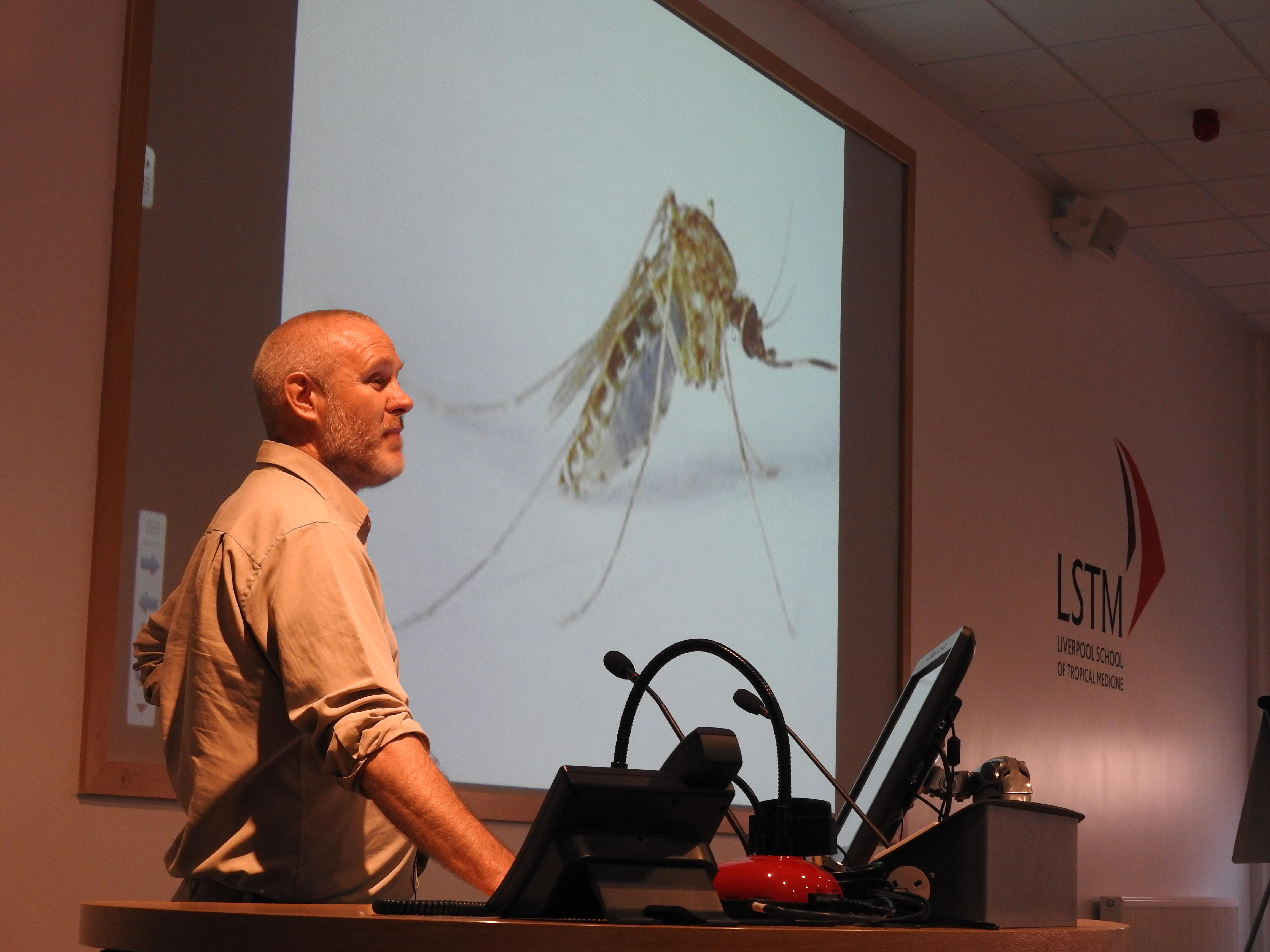
Dr Gerry Killeen, reader at LSTM, based at Ifakara Health Institute, Tanzania delivered a special seminar at LSTM entitled: The past, present and threatened future of residual malaria transmission. He was introduced by LSTM’s professor of evolutionary genetics Martin Donnelly.
Dr Killeen began by talking about the evolution of malaria control programmes from the 1960s . He commented that much of what we see today with regards to malaria transmission and elimination strategies have been seen throughout history, as all these programmes attempted unsuccessfully to utilise combinations of indoor residual spraying (IRS) of insecticide, mass drug administration and long-lasting insecticidal nets (LLINs) to try to eliminate malaria completely. He stressed that if these programmes had been termed control programmes, they would have been described as a success due to, at least, the fall in mosquito populations observed. However, it is the remaining residual transmission of malaria is a problem for elimination strategies.
Today, vector control using LLINs and IRS still accounts for most of the recent reduction in the burden of malaria cases in low and middle-income countries (LMICs). While highly effective, they are insufficient to eliminate malaria transmission in many settings, because of operational constraints, growing resistance to available insecticides, and mosquitoes that behaviourally avoid contact with these interventions.
However, several opportunities now exist for rapidly developing and implementing more effective, and sustainable malaria vector control strategies for LMICs including a combination of mosquito-proofed housing and environmental management, supplemented with large-scale insecticide applications to larval habitats and outdoor spaces that kill off vector populations. Despite their potential, these interventions are still currently under-utilised in LMICs. Furthermore, a range of emerging technologies are becoming available for targeting mosquitoes when they feed outdoors, attack livestock, feed on sugar (for example utilising sugar baits) or when they enter houses (including the use of electrostatic netting, eave tubes and eave baffles) which could be used in LMICs in the future.
While currently vector control does not have the key to eliminating malaria, global policy must be realigned to mobilize the political and financial support necessary to exploit these opportunities over the decade ahead. In this way national malaria control and elimination programmes can access a much broader, more effective set of vector control interventions.
A video of the presentation can be found here.